Pale Cream Sherry (Spain)
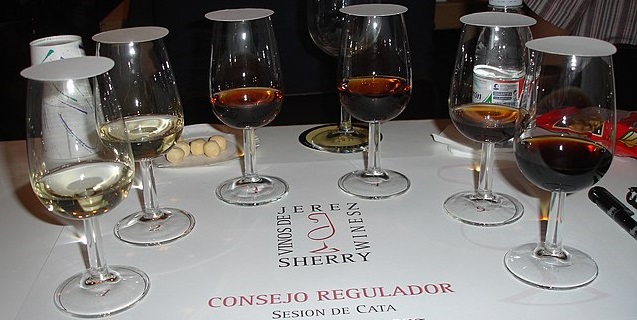
Sherry is a fortified wine from Andalusia in Southern Spain.
Pale Cream is produced from biologically aged Sherry Fino or Manzanilla.
Pale Cream Flavors
Pale Cream has flavors of Citrus and clear notes of Nuts and Honey.
It also has the flavors of Biologically Aged Wine:
Hazelnut and Dough received from the Flor.
Lime |
Grapefruit |
Honey |
Marzipan |
Dough |
Baked Apple |
Hazelnuts |
Almonds |
Pale Cream Profile
Pale Sherry is a light and sweet dessert wine.
| SUGAR: | 45-115 g/l |
| BODY: | Medium |
| ACIDITY: | Medium |
| ALCOHOL | 15-22% |
| Serving temperature: 7°C (45°F) As Aperitif on the Rocks | |
Pale Cream Food Pairing
Pale Cream Sherry can be an aperitif served with ice.
It is a good match with Pâté. Foie Gras. Mature Cheese (Gouda. Comté. Gruyère. Manchego). Fruit Salads. Cheesecake. Pastry and Fruit Pies. Chocolate Brownies. Coffee after Dinner.
Aperitif |
Pâté |
Pastry |
Cheesecake |
Mature Cheese |
The Ideal Glass for Pale Cream
A Small Tulip Shaped glass will concentrate the aromatic intensity, enhancing the beautiful flavors the wine is known for.

|
A small glass is appropriate, because this type of wine is served in smaller portions due to its sweetness and richness. The narrow rim helps capture the aromas, allowing the wine's sweet, aromatic profile to shine. |
About Sherry
Sherry is a fortified white wine from the region of Jerez in Andalusia, Southern Spain: one of the most southerly winegrowing regions in Europe (latitude 36º North).
Jerez de la Frontera, Sanlucar de Barrameda and El Puerto de Santa Maria mark the three corners of the famous "Sherry Triangle".
The sea breeze, the proximity to the Atlantic Ocean, the hot and dry climate, the 3 soils (Albariza, Barros, Arenas), the typical grapes (Palomino, Pedro Ximénez, Moscatel) and biological aging are the secrets to make Sherry.
Albariza soil covers 90% of the Jerez Sherry vineyards.
In spite of the hot and dry climate, in the DO Sherry it is not permitted irrigation.
The special chalky soil stores the winter rainfall and distributes the moisture to the vines during the dry season. Also the sea winds bring moist to the vines.
Sherry Styles
Sherry can be Dry or Sweet.
Sherry can be aged with or without Flor.
Most types are produced from the local Palomino grape.
Dry Sherrys (Generosos) comes in 3 Main Styles:
(Sugar in grams/litre)
| Style | Grape | Floor | Sugar | Alcohol |
|---|---|---|---|---|
| Fino | Palomino | Yes | 0-5 | 15-18% |
| Manzanilla | Palomino | Yes | 0-5 | 15-18% |
| Amontillado | Palomino | Hybrid | 0-5 | 18-20% |
| Oloroso | Palomino | No | 0-5 | 18-22% |
Sweet Sherrys (Generosos de Licor) comes in 4 styles:
| Style | Grape | Flor | Sugar | Alcohol |
|---|---|---|---|---|
| Pale Cream | Palomino | Yes | 45-115 | 15-20% |
| Medium Dry | Palomino | Hybrid | 5-45 | 16-22% |
| Medium Sweet | Palomino | Hybrid | 45-115 | 16-22% |
| Cream | Palomino | No | 115-140 | 16-22% |
Natural Sweet Sherrys (Dulces Naturales):
| Style | Grape | Flor | Sugar | Alcohol |
|---|---|---|---|---|
| Pedro Ximénez | Pedro Ximénez (PX) | No | 212+ | 15-22% |
| Moscatel | Moscatel de Alejandria | No | 160+ | 15-22% |
DO Jerez–Xérès–Sherry
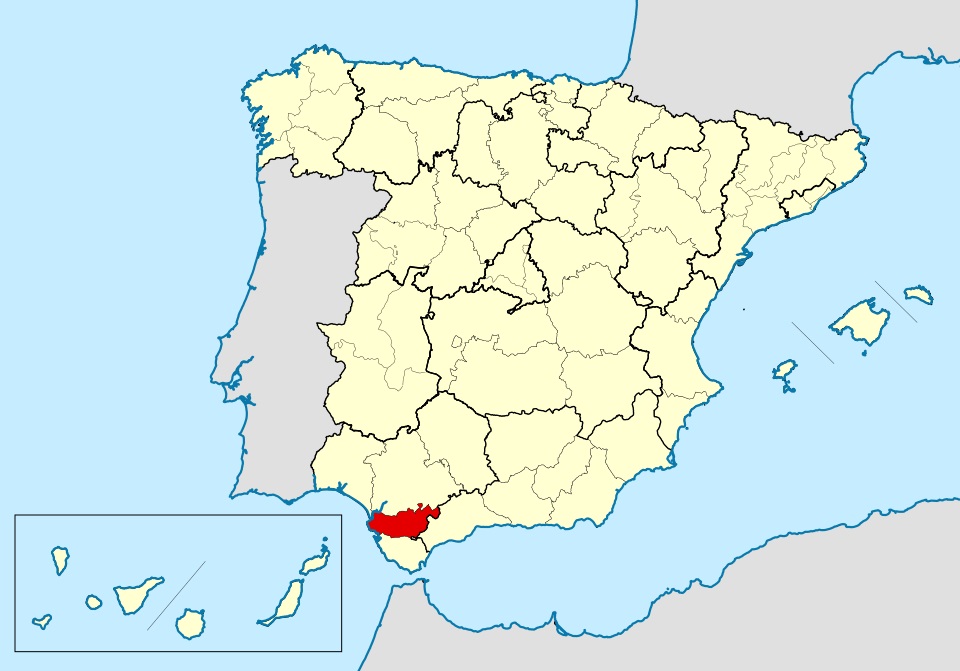
The Sherry Triangle
The Jerez wine region is a part of the Sherry Triangle, a triangular land mass formed by the towns of:
- Jerez de la Frontera
- Sanlúcar de Barrameda
- El Puerto de Santa Maria
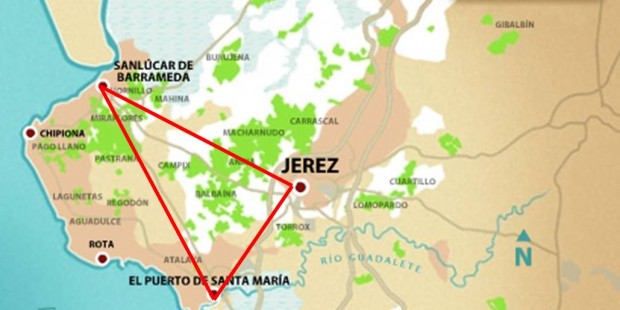
Jerez de la Frontera is a city and municipality in the province of Cádiz in Andalusia in Spain. It is famous for its fortified Sherry wines.
The Sherry Triangle (Jerez-Xérès-Sherry) in the province of Cádiz, is renowned for producing Sherry, a fortified wine made primarily from Palomino, Pedro Ximénez, and Moscatel grapes.
Sherry is produced using a unique aging process known as the solera system, which involves fractional blending of wines from different vintages.
The region's chalky albariza soils, warm climate, and coastal influences contribute to the distinctive flavors and styles of Sherry, including Fino, Amontillado, Oloroso, and Pedro Ximénez.
Climate
Jerez has specific climatic conditions. The winters are mild and the summers very hot and sunny (temperatures often hit 40º C).
In spite of the hot climate, the amount of rain Jerez receives is high. With 650 mm per year, it can compete with England.
Winds
From the Atlantic, the Poniente brings humidity and a cooling effect. The Levante from the Spanish inland, brings hot air and drier conditions. The two winds meet in Jerez and contribute to the peculiar environmental conditions that allow the unique biological ageing of Sherry wines.
Dry Sherry | Sweet Sherry |
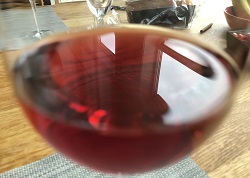
|

|
Black Grapes | Sherry Grapes |
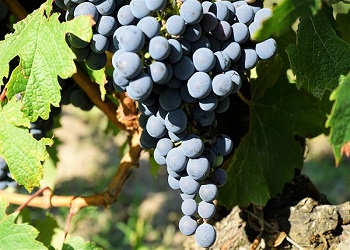
|
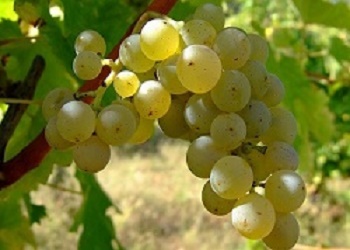
|
Albariza Limestone
Albariza Limestone Soil covers 90% of the Jerez Sherry vineyards. This chalky soil stores the winter rain and distributes the moisture to the vines in the dry season.
Albariza Limestone has similar characteristics to the soil in Chablis and Champagne.

In Jerez, an algae called diatoms, were deposited during the formation of the Guadalquivir river. Later when the seawater receded, the skeletons were deposited, forming the chalky albariza soils which Jerez is known for today.
Alcohol can be addictive. Always drink in moderation.
© Copyright 2015-2025 W3 Wine School. All Rights Reserved.